ArcLight
The ArcLight observatory was established in 2017 as a collaboration between NTNU and UiT and is operated as part of the Arctic ABC Development programme funded by the Norwegian Research Council (project nr 245923). It is located at 79N, close to Ny-Ålesund, Svalbard, and it is measuring biological relevant light year round, including the dark polar night. The observatory is registered in RiS (project nr 10624).

Live all sky camera - hourly update
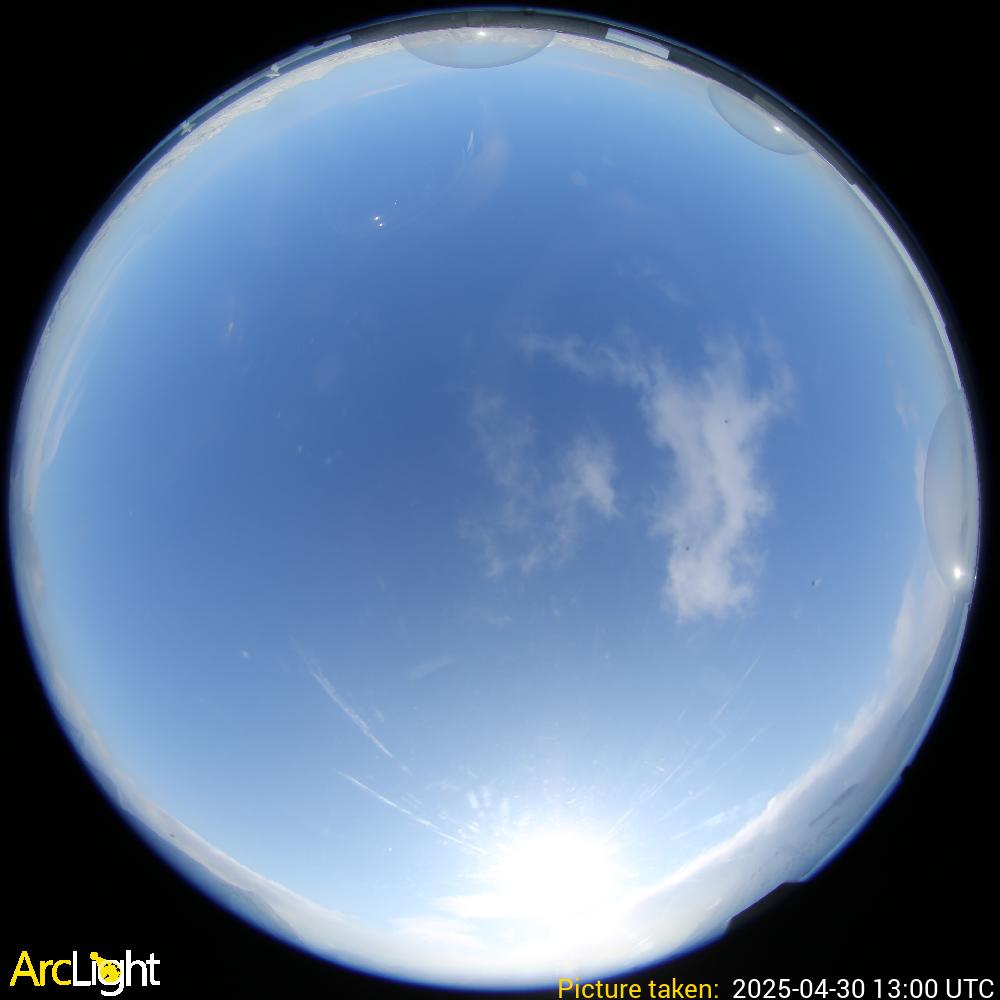
Live data from the Licor EPAR sensor, hourly update

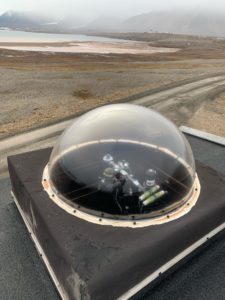

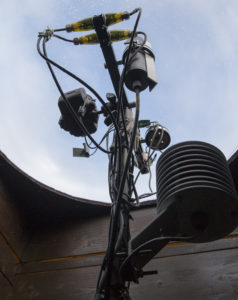
Measurements
Annual variability in Photosynthetic Active Radiation (EPAR) January - October 2020

Example of measurements by the Arctic ABC light nodes

Data access
All data from the ArcLight observatory will be open access, available through the NIRD (Norwegian Infrastructure for Research Data) archive. Datasets will be uploaded annually, and can be visualized through our Enlighten front-end solution. In march 2021 we have published the first set of all-sky camera pictures (full year 2020). More data will become available as we proceed with the processing.

Sensors
How much light is available for biological processes during the Polar Night? This question appears simple enough, but the reality is that conventional light sensors for measuring visible light (~350 to ~700 nm) have not been sensitive enough to answer it. Beyond this technical challenge, “light” is a general term that must be qualified in terms of “light climate” before it has meaning for biological systems.
In order to be able to measure biologically relevant light all year round, we have installed several different sensors – each capable of measuring light at different intensities:
LiCor EPAR sensors
There are two Licor LI-190R sensors currently installed in the ArcLight observatory for measuring photosynthetically active radiation () in wavelength range from 400 to 700 nm:
- the first one was deployed during the Polar Night Cruise in January 2020,
- in September 2020 we have installed a second sensor with a new datalogger for providing better resolution of low-light measurements during the coming Polar Night.
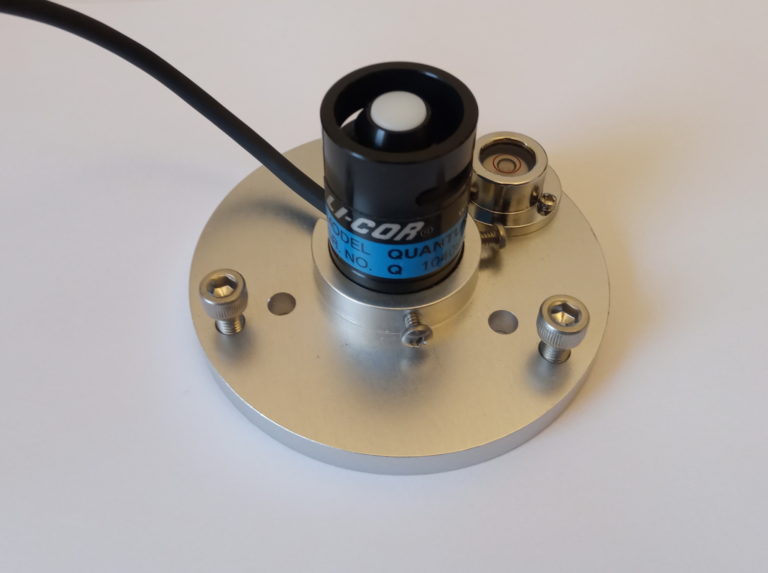
Arctic ABC light nodes
These are light sensors developed through the Arctic ABC Development programme, and are identical to those embedded in the Ice-tethered observatories currently operated in the Arctic. Values from these sensors are currently raw numbers, but a calibration and reference curve to transform the raw counts into absolute quanta is under development (Schartmüller et al, in prep)

All-sky camera
An all-sky camera is taking a picture every hour. Based on the settings of the camera and RGB values in the picture, a value for EPAR is calculated (Johnsen et al, in prep).
USSIMO
A multispectral sensor designed specifically to measure light in low-light conditions (Johnsen et al, in prep)

Learn more about light in polar regions
There are several excellent reviews on light and its biological relevance in general (Land and Nilsson 2012; Johnsen 2012; Cronin et al. 2014), and in the polar environment specifically (Sakshaug et al. 2009; Pavlov et al. 2019), and we refer you to these for further details on physical aspects of light, and how organisms detect and use it. Here, we highlight the concept of light climate, as it includes the key elements needed to understand light during Polar Night.
Specifically, light climate comprises the intensity, spectrum, and duration of light for a given location. Each of these parameters can be considered in a variety of units, and crucially for their biological relevance, each are species-dependent. Below you find some fundamental considerations for each parameter concerning measurement and units.
You can find more information in Cohen et al. 2020, Chapter 3 of the Polar Night book
Light intensity can be measured as radiance (L) or irradiance (E) (Fig. 1A). Radiance refers to photons emitted per unit area per second, while irradiance refers to photons received per unit area. The angle of the sensor is variable for either quantity, but typically in biological studies directional measurements concern downwelling light (Ld, Ed) or upwelling light (Lu, Eu). Irradiance is typically measured in “hemispheres” where the collector may either be cosine-weighted to favor photons normal to the collector face (cosine), or equally capture photons from all angles of the 180° hemisphere (2π). Alternatively, scalar irradiance (Eo) measurements can be made with a 4π collector which encompass both downwelling and upwelling light over 360°, mimicking the absorption surface of an algal cell in the water column. Irradiance is commonly measured in energy units (W m-2) or quantal units (photons s-1 m-2 or µmol photons s-1 m-2), with the latter particularly useful for studies of photosynthesis and vision. A common confusion concerning intensity measurements involves photometry versus radiometry. Radiometry concerns measurements of radiance and irradiance. Photometry concerns measurements of luminance and illuminance, which are analogous, but involve weighting the measurement by photopic human visual sensitivity and are expressed in terms of lumens. Photometric measurements are not directly relevant to biological processes apart from human vision.
Radiance refers to photons emitted per unit area per second, while irradiance refers to photons received per unit area. The angle of the sensor is variable for either quantity, but typically in biological studies directional measurements concern downwelling light (Ld, Ed) or upwelling light (Lu, Eu). Irradiance is typically measured in “hemispheres” where the collector may either be cosine-weighted to favor photons normal to the collector face (cosine), or equally capture photons from all angles of the 180° hemisphere (2π). Alternatively, scalar irradiance (Eo) measurements can be made with a 4π collector which encompass both downwelling and upwelling light over 360°, mimicking the absorption surface of an algal cell in the water column. Irradiance is commonly measured in energy units (W m-2) or quantal units (photons s-1 m-2 or µmol photons s-1 m-2), with the latter particularly useful for studies of photosynthesis and vision. A common confusion concerning intensity measurements involves photometry versus radiometry. Radiometry concerns measurements of radiance and irradiance. Photometry concerns measurements of luminance and illuminance, which are analogous, but involve weighting the measurement by photopic human visual sensitivity and are expressed in terms of lumens. Photometric measurements are not directly relevant to biological processes apart from human vision.
(Cohen et al. 2020)
 One way to do this is to measure both intensity and spectrum simultaneously with a hyperspectral light sensor, providing measurements of L, E, and Eo per nanometer across the spectral window of the sensor. However, a common approach to light measurement in biological studies is to report a value for “Photosynthetically Active Radiation” or PAR, which is light intensity integrated from 400-700 nm. While this light range encompasses wavelengths responsible for many biological processes (e.g., photosynthesis, vision, entrainment of endogenous rhythms), it must be remembered that “PAR” only denotes the spectral range of the measurements, so radiance or irradiance as described above could both be measured as PAR. For an irradiance measurement, clearly defining a measurement as, for example, Eo,PAR, resolves this issue.
One way to do this is to measure both intensity and spectrum simultaneously with a hyperspectral light sensor, providing measurements of L, E, and Eo per nanometer across the spectral window of the sensor. However, a common approach to light measurement in biological studies is to report a value for “Photosynthetically Active Radiation” or PAR, which is light intensity integrated from 400-700 nm. While this light range encompasses wavelengths responsible for many biological processes (e.g., photosynthesis, vision, entrainment of endogenous rhythms), it must be remembered that “PAR” only denotes the spectral range of the measurements, so radiance or irradiance as described above could both be measured as PAR. For an irradiance measurement, clearly defining a measurement as, for example, Eo,PAR, resolves this issue.The diel (24h) cycle of light can be considered in terms of its photoperiod (Fig. 1C).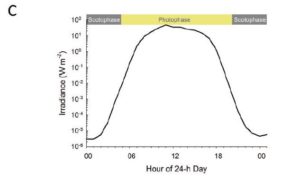 In this way, the light portion of the 24h cycle is denoted as “day” or “photophase”, and the dark portion as “night” or “scotophase”. Photoperiod then is expressed as [hours day]:[hours dark]. For some biological processes, such as photosynthesis, day represents the active period (i.e., actinic light providing photosynthesis) while night represents the inactive period. However, the active phase may occur at night for other processes, such as nocturnal diel vertical migration. Photoperiod can entrain biological clocks, providing information on time of year needed to control patterns of physiology and behavior. An open question concerning measurement of photoperiod is what light level to consider as the break between “day” and “night”. This will ultimately depend on the light sensing ability of the organism in question.
In this way, the light portion of the 24h cycle is denoted as “day” or “photophase”, and the dark portion as “night” or “scotophase”. Photoperiod then is expressed as [hours day]:[hours dark]. For some biological processes, such as photosynthesis, day represents the active period (i.e., actinic light providing photosynthesis) while night represents the inactive period. However, the active phase may occur at night for other processes, such as nocturnal diel vertical migration. Photoperiod can entrain biological clocks, providing information on time of year needed to control patterns of physiology and behavior. An open question concerning measurement of photoperiod is what light level to consider as the break between “day” and “night”. This will ultimately depend on the light sensing ability of the organism in question.
Polar Night as defined by solar elevation
In its most simple definition, Polar Night occurs when the sun remains below the horizon throughout a full diel cycle. That is, solar elevation remains less than 0° over the 24-h day. When considering the number of days each year that this occurs, the duration of Polar Night increases by approximately 6 days for each degree of latitude. Thus, Polar Night lasts ~1 month at 68° N, 3.5 months at 78° N, and 5.5 months at 88° N, extending to a full 6 months at the North Pole. At the southern hemisphere, the Polar Night can be defined in exactly the same terms. However, with a focus on the marine system, the two hemispheres are “poles apart” in more than one respect – while the marine Arctic cover nearly the entire region north of 80°N, the Southern Ocean does not go beyond 80°S.


Twilight
The Polar Night be thought of as an annual process with four different levels of light (Polar twilight, Civil Polar Night, Nautical Polar Night, and Astronomical Polar Night), with each level defined by the sun’s elevation relative to the horizon. Hence, the exact level of Polar Night at any given location depends not only on latitude, but also have a temporal component. While these definitions adequately describe Polar Night in an annual context, solar elevation is constantly changing over the diel cycle, whether the sun is visible or not. So understanding light climate during any of the four levels of Polar Night also requires further consideration of solar elevation in terms of the gradation of twilight. Twilight is defined based on the sun’s elevation below the horizon at any moment. Civil twilight occurs when solar elevations are between the horizon and 6° below it. Nautical twilight occurs when solar elevations are 6° to 12° below the horizon. Astronomical twilight occurs when solar elevations are 12° to 18° below the horizon. Beyond this is “darkness”. These definitions are useful for understanding light during Polar Night in two ways. First, at any point in the diel (24 h) cycle during Polar Night, the gradation of twilight can be identified, which then provides a measure of light intensity at that time. Second, any given day during Polar Night can be categorized according to the level of twilight occurring at solar noon. This provides a useful way to think about Polar Night at a given latitude.
Find more information in Cohen et al. 2020, Chapter 3 of the Polar Night book



